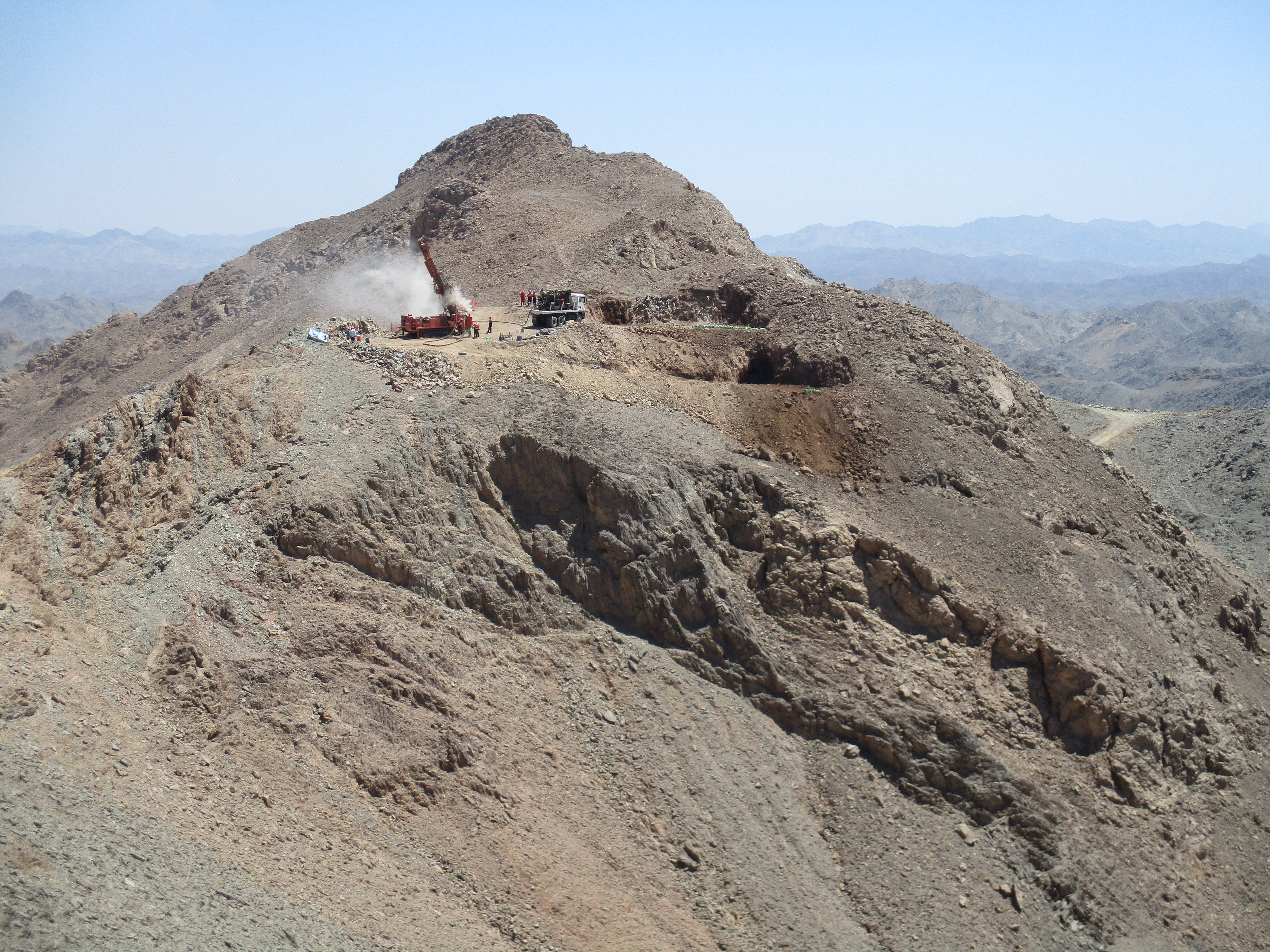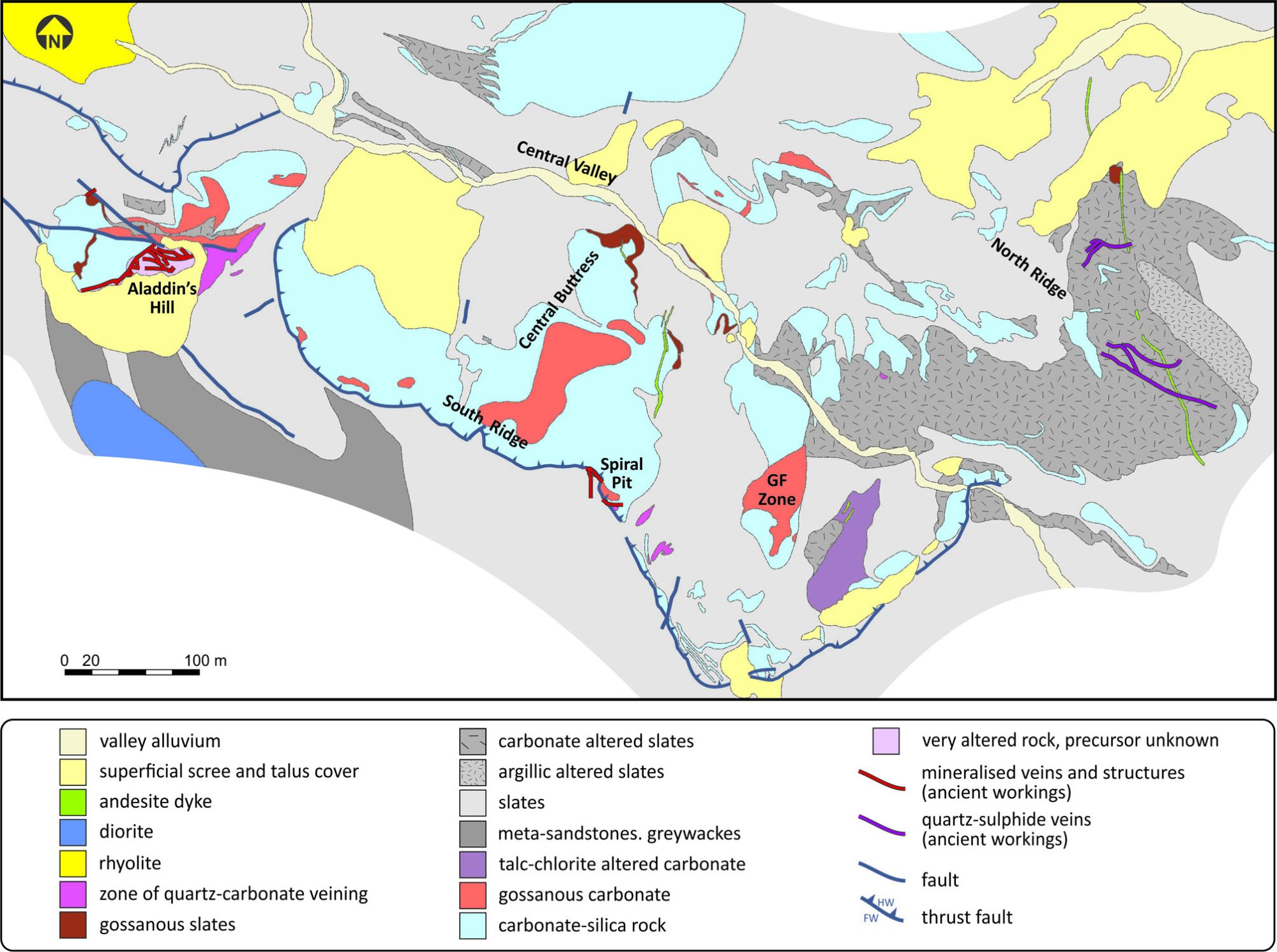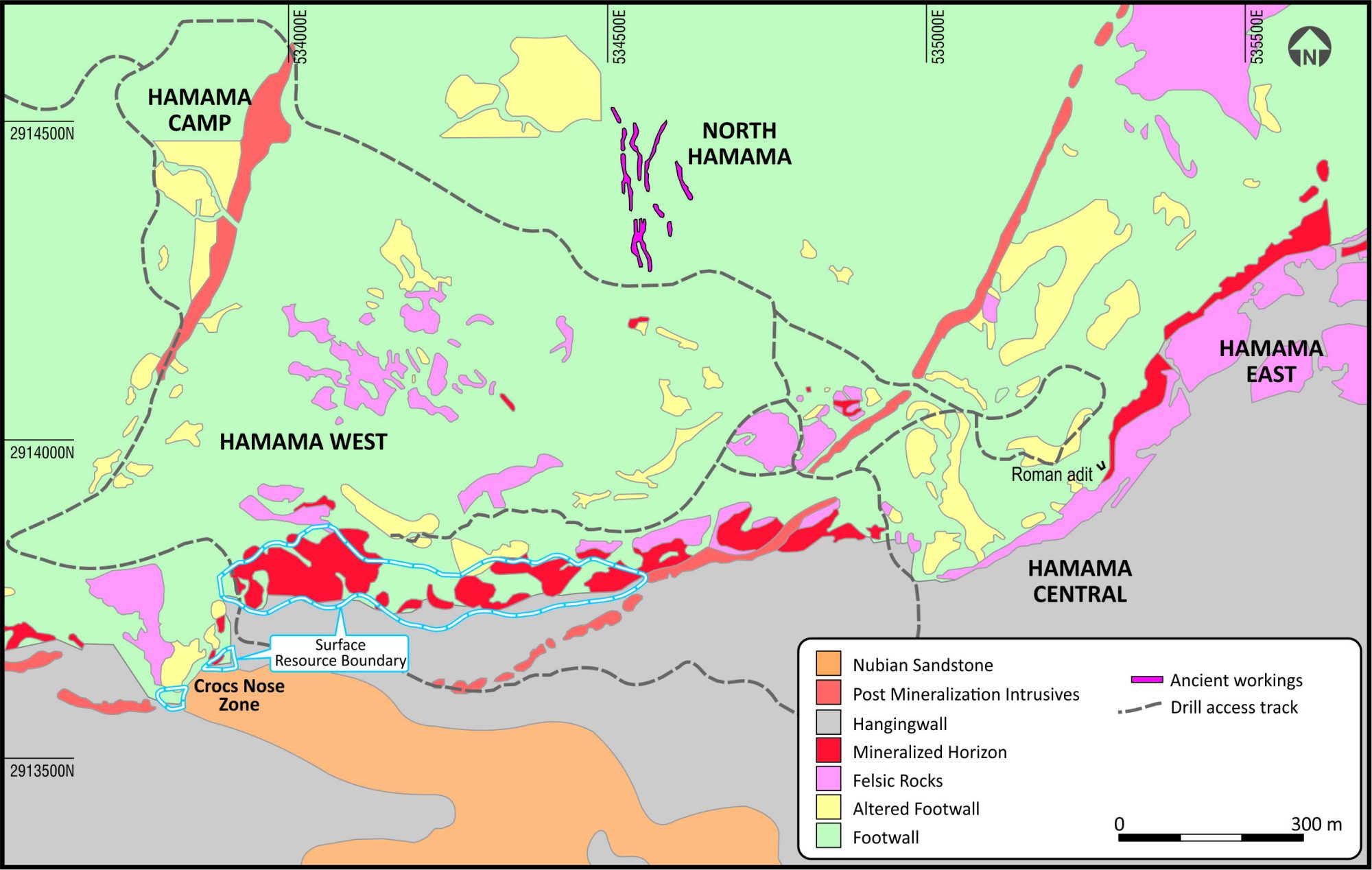Javier Orduña | Aton Resources’ Rodruin Project Drilling Result Update and 2019 Exploration Plans
In this interview Aton Resources’ exploration manager, Javier Orduña provides an overview of the successful 2018 drill program at the company’s Rodruin project as well as shares regarding the company’s 2019 exploration plans. The Rodruin project was discovered in December 2017 and is also known as the “Legendary Lost Mountain of Gold”. Aton was aware that there was a legend of mountain of gold that used to be mined many millennia ago somewhere on their massive 738 square kilometer, 100% owned Abu Marawat Concession located in Egypt’s Arabian-Nubian Shield. While studying the aerial imagery of their concession, Aton’s team of explorers noticed some ancient trails leading up to a mountain. When they hiked up the mountain for the first time, they discovered the extensive remains of ancient mine workings. The company has just completed phase one of the drill program at Rodruin.
Javier has 20+ years of experience primarily as an exploration geologist, and has worked in Australia, Central Asia, west and north-east Africa, Europe, Cuba, and the Middle East. He has worked in regional greenfield exploration, through to brownfield mine-based exploration, and also spent time as an underground mine geologist at St Ives in Western Australia. He has also worked on several feasibility studies and mine development projects, and has been involved in successfully bringing several major projects through to production in Kazakhstan. He has experience in a wide variety of geological settings, and mineral types and has been involved in gold, copper, chromite, nickel, bauxite, iron ore, and mineral sands exploration and development projects and has extensive experience in VMS deposits.
BEGIN TRANSCRIPT:
Bill: Welcome back, ladies and gentlemen. Thanks for tuning in to another Mining Stock Education episode. I’m Bill Powers, your host. I appreciate you tuning in to this podcast. Well, we have an update interview today with one of our sponsor companies, Aton Resources. About a month ago we heard from Aton CEO, Mark Campbell. He gave us an update after 36 of the 50 reverse circulation holes were reported at the company’s Rodruin Project. During that interview, Mark said that the Rodruin Project appears to be shaping out to be a large, near-surface, bulk-tonnage gold deposit with high-grade shoots.
Well, Aton just reported the final 14 holes of the 50 holes of phase one of this drill program, and here to discuss the results and Aton’s exploration plans for 2019 is Javier Orduña, who is the exploration manager with Aton Resources. He’s a returning guest. So Javier, welcome back to the podcast.
Javier: Yeah. Hi, Bill. It’s good to be with you again.
Bill: And I’d like you to give us an overview. The 50 holes are reported now, give us some of the highlights, and what’s the significance at this point?
Javier: Okay. Well, as you know, we finished drilling in in December. We got our final assay results back from the laboratory in Romania. They came through in January. And obviously, as you’ve said, we’ve put out the results of the final outstanding holes last week it was, so the final 14 holes. Now we’re very pleased with the program.
Essentially, our main objective was to get out there. It was a first pass program to go and have a look at as much of Rodruin area, which we could practically access. As you know, it’s a little bit rugged up there, so there’s issues involving getting drill sites in. But really what we wanted to do was go out and test as much of the mineralization which we’d sampled at surface over the last few months now. We think we’ve done that.
So we drilled 50 holes, we drilled a little over 4,000 meters, so about an average of 80 meters per hole. Now again, as you know, we found a lot more underground workings, ancient underground workings, than we were expecting, which is a good thing in some ways because it clearly indicates there’s plenty of high grade gold there. But in other ways it’s not such a good thing because we had to abandon some of the holes. So we drilled exactly 50 holes.
Now some of them we abandoned very close to surface, at about 5 meters, because we were hitting a lot of these underground workings very close to surface, in some places quite unexpectedly. And some holes we took to the maximum depth we could drill, which was 200 meters. Now Capital Drilling had 200 meters of rods on board. So 3 or 4 holes, we took all the way down at 200. So the results were good. We got a good look at the whole of the area, and we were pretty satisfied with the overall program.
Bill: Can you highlight some particularly good holes that you liked?
Javier: Yeah. Well, I guess we had a pretty good start with hole three. We started at the Aladdin’s Hill end of the deposit. It’s where we arrived where the road came in from the west. It’s also where we had done a significant amount of surface. We found old workings, and we’d actually been down these workings 30, 40 meters. We’d found a lot of visible gold at surface at Aladdin’s Hill, so it looked pretty exciting. And it was where we arrived, so it was a pretty obvious no brainer place to start drilling.

Aladdin’s Hill
So we drilled the first few holes there. And of course in our press release, which came out in the Discovery press release, which we put out the beginning of October. We had a pretty spectacular intersection in hole three. It was about 36 meters essentially from surface at 12.5 grams. So that was a good start. Unfortunately, when you start with something like that, it’s pretty hard to replicate something like that. But what we’ve been out, as I say, is looking at the area of a hole, and we’ve seen a lot of mineralization over a lot of the area.
But the good things are we’ve also been to other zones, like the Spiral Pit, and we’ve hit good sort of 5+ gram intersections over decent widths. So we’ve hit in whole 29 I think. We also had some good high grade mineralization in hole 32, I think, on the Central Buttress Zone also, 10 meters at over five grams. And the last hole, which we just reported, hole 50, which we intersected a thick zone of sulfide mineralization, we also had a high grade zone at the bottom of that. Again, we had over 10 or 11 meters at over five grams.
So what we’ve done is we’ve intersected a lot of mineralization over a large area, which was really the number one objective of this program, trying to identify mineralization, see if it’s actually there, and it’s not just a surface artifact. Clearly it’s not. But we’ve also intersected these high grade zones as well. So we’re pretty happy with that.
Bill: We’re obviously a ways away from a feasibility study, and your answer would be of course a forward-looking statement. But with some of these high grade shoots so close to the surface that potentially could make this project a more economical. If you start with a high grade starter pit, your capital expenditure is going to be lower, and you can also pay back the money you need to borrow to build the mine quicker. So I mean, that’s still a possibility for this project to have a high grade starter pit potentially. Is that right?
Javier: Yeah, absolutely. Absolutely. As I say, it was a first pass program, so we were testing mineralization, which we had sampled at surface. So we weren’t trying to hit something 500 meters down. We were testing what we saw at surface, as I say, to see if it was really mineralization in bedrock or just a surface artifact thing. Clearly it’s not. Clearly we’ve drilled good, wide, thick intersections from either at surface, or very close to surface.
So yeah, for sure. We’ve had good, wide intersections at lower grades, and some of the ones we just talked about, that good sort of good solid in sections 30, 40 meters at one, two, two-plus grams as effectively from surface. So these would be very easy to dig out. In terms of mining, you’d be effectively mining ore from day one. And it’s all oxide material, so it’d probably be pretty amenable to leaching.
In terms of looking at it from a mining perspective, you would have an incredibly low stripping ratio on a lot of mineralization we’ve been hitting at surface. So all the early indications, and we’re seeing it over wide areas. As I say, we’re seeing mineralization stretch over at least 500 meters between Aladdin’s Hill and the GF zone down at the southeastern end.
So in terms of a mining project, it’s perfect. You can’t actually get anything better than that really, low strip ratios, decent grades, not spectacular grades. It’d be nice if it was all 12 grams, but that’s not realistic of course. But in terms of a potential mining project, It looks great. Yeah.

Rodruin Project
Bill: So phase one is completed. You’re currently getting ready for phase two. Can you talk about phase two? Are you going to be going deeper than 200 meters? And then why did you choose the particular targets for phase two of the drilling program?
Javier: Well, we’re still going through the results of phase one. We haven’t fully drawn up the sections and so on and so forth. It’s a bit complicated. Structurally, it’s quite complicated. In many ways, we have a very interesting license area. We have a variety of different gold mineralization styles in our license area, which we’ve talked about. So we have a lot of an orogenic, typical shear-hosted gold mineralization in certain places.
In others, we have granite-related, which looks like intrusive-related gold deposits. And then we have a series of carbonate-hosted gold deposits, such as at Hamama, and such as the new discovery at Rodruin, and probably also another discovery we made last year, I think, at [inaudible 00:08:29], and also possibly at Abu Marawat too. What we think we have a continuum of mineralization styles in Rodruin, it looks, in many ways a lot like Hamama, but in many ways it’s a lot different.
So we’re still figuring her out with geology what clearly is the case, which is what makes Rodruin really quite attractive is that the grades are clearly considerably higher than what we see at Waayrah. So we’re very pleased with that. We’re still, as I say, figuring out the geology. It’s complex structurally. I won’t go into details, but it’s gonna take a little bit to put together.
But essentially, phase two will be extending on what we’ve done on phase one. Again, the nature of the site, it’s not always easy to get drilling positions in, so we will be extending the drilling to follow up on some of the areas which we’ve already drilled. We need to go back and try to get more of a grid pattern to be able to actually join the holes up in terms of moving towards the resource, following up some of the work.
And I think one of the most exciting things, what we’re particularly excited about, not withstanding the fact that we’ve got this easily minable, very economically attractive oxide mineralization at surface, is we see this deep sulfide mineralization in a couple of the holes, specifically 17 and 50.
Now we believe that this is where the real big potential lies at Rodruin. If we can identify a significant, big, bulk sulfide resource, then it could turn into really something pretty big and substantial. So chasing that is going to be one of our objectives, as well as following up what we’ve done in phase one.
Bill: Aton’s exploration license was just extended by the Egyptian government. Can you talk about the significance of that?
Javier: Yeah, sure. It’s very good. We’re very pleased with that. They’ve given us a one year extension. Now essentially, as our current concession agreement stands, we reach the end of the license, and then we have to move to a commercial declaration. Now I’m not going to go into all this because obviously Mark’s talked about it in more details. But essentially, they’ve given us a year’s extension, so that’s put that off for an extra year. So we can continue exploring as we are.
We had some of the senior guys from EMRA come down and visit us on site. They were stunned when they saw what we’d been doing at Rodruin. They just had no concept of what we’re actually doing on site, so they were astounded to see these rigs, and bulldozers working up on the sides of the mountain. So the bottom line is they were very pleased and very happy with what we were doing and what they saw, and were very supportive too.
They’ve agreed to give us another year’s extension now, so that effectively is a standstill on the existing concession agreements. They’ve also verbally indicated that as long as we’re working, which of course we will be, they’re happy to give us another extension at the end of this year and going forward. We will see what happens obviously, but essentially it’s given us the opportunity to continue doing what we’re doing, continue advancing Rodruin, and continue to advance our exploration program. So we’re very happy with that.
And then of course there’s the change in the mining legislation, which is all going on. And again, I know Mark would have talked about it, so I won’t talk about it. But again, maybe in a year’s time, maybe we will get to move to a completely new set of terms and conditions. So essentially, if a one year extension is exceedingly valuable, it gives us a chance to carry on doing what we’re doing, and it’s basically standstill.
Bill: Can you talk about your exploration plans for Hamama this year?
Javier: Yeah. We’ve, as you know, we delivered a technical study to EMRA in May last year, and that was on the basis of that, again as part of the terms of the licensing. It’s a wee bit complicated. They gave us a six month extension through to January. And now the intention of that is at the end of that, you deliver a full feasibility study, and essentially you move to a mining license. Now we explained to them in May last year it’s not possible to move to a full feasibility study in the sort of time limits that are involved. So this is one of the tricky aspects that you have to deal with the licensing regime here.
But essentially, our plan is to continue to move that forward. Now we’ve done a preliminary economic analysis on it. We haven’t released that, but it looks quite good. We have a nice, favorable oxide deposit, certainly, at the top of Hamama, which is what we concentrated on. We didn’t look at the deeper sulfide resource. And interestingly, it looks in many ways very similar to what we’re seeing at Rodruin.
So essentially, we would look to this year, one, Rodruin will remain our main focus. We want to continue to advance that. We believe that’s our best looking prospect. But we also want to advance Hamama West as well. That’s certainly part of the plan too, as well as doing some region exploration on some of our other numerous excellent targets.

Hamama
Bill: I encourage listeners to go to www.atonresources.com. There you can enter your email, sign up for the email list so you can be on top of the news, whether it’s announcing the upcoming drill program, or receiving the drill results, the assay results as soon as they come in. Javier, as we conclude, are there any final thoughts that you’d like to share with the listeners?
Javier: Yeah. I’d to say we’re pretty excited about where we are. We’re pretty happy, as I say, with the first off program at Rodruin, and we have a lot of plans for 2019, going into 2020. As I said, we want to advance Rodruin. We want to advance Hamama West as well, of course. And we also want to get back into some of the regional exploration.
Now we’ve concentrated really on Rodruin for completely justifiable and understandable reasons for much of 2018, moving into 2019. While it remains obviously our primary focus, and we’re going to continue moving it forwards, and we would look to be moving it forwards towards the resource estimate probably sometime in 2020, we also want to go back and look at some of our other targets. As you know, during 2017 we did a pretty comprehensive review of our license area, and did quite a lot of sampling on some of our other regional targets, a lot of which are also excellent targets in themselves.
So while we’re advancing Rodruin, and while we’re looking to push Hamama ahead, we also want to go back and test, and start actually drilling on some of these other regional targets. So we have a pretty big year planned ahead. It’s pretty exciting. We’ve got a lot to do. We’ve got a big plan in front of us. All we need now is to make sure we’ve got the funding in place to fund it. But we’re pretty happy with where we are, and we’re looking forward to a pretty exciting 2019.
Bill: Well, Javier, thank you very much for the update. I appreciate you stopping by to keep us up to date.
Javier: No worries, Bill. Good to catch up, and I’m sure we’ll catch up again. Cheers.





